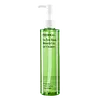What's inside
What's inside
 Key Ingredients
Key Ingredients

 Benefits
Benefits

 Concerns
Concerns

 Ingredients Side-by-side
Ingredients Side-by-side

Water
Skin ConditioningCoco-Betaine
CleansingGlycerin
HumectantButylene Glycol
HumectantMelaleuca Alternifolia Leaf Water
AntimicrobialAloe Barbadensis Leaf Water
Masking1,2-Hexanediol
Skin ConditioningSodium Chloride
MaskingCentella Asiatica Extract
CleansingCamellia Sinensis Leaf Extract
AntimicrobialGlycyrrhiza Glabra Root Extract
BleachingRosmarinus Officinalis Leaf Extract
AntimicrobialPotassium Cocoyl Glycinate
Melilotus Officinalis Extract
AstringentTromethamine
BufferingAsiaticoside
AntioxidantMadecassic Acid
Skin ConditioningAsiatic Acid
Skin ConditioningGluconolactone
Skin ConditioningXylitol
HumectantEthylhexylglycerin
Skin ConditioningSalix Alba Bark Extract
AstringentAnhydroxylitol
HumectantGlucose
HumectantMelia Azadirachta Flower Extract
Skin ConditioningChaenomeles Sinensis Fruit Extract
AntioxidantCitrus Aurantium Dulcis Flower Extract
Skin ConditioningAcrylates/C10-30 Alkyl Acrylate Crosspolymer
Emulsion StabilisingCutibacterium Granulosum Ferment Extract Filtrate
EmollientXylitylglucoside
HumectantPolyglyceryl-4 Caprate
EmulsifyingChamomilla Recutita Flower Extract
MaskingMelia Azadirachta Leaf Extract
Skin ConditioningPolygonum Cuspidatum Root Extract
AntioxidantScutellaria Baicalensis Root Extract
AstringentWater, Coco-Betaine, Glycerin, Butylene Glycol, Melaleuca Alternifolia Leaf Water, Aloe Barbadensis Leaf Water, 1,2-Hexanediol, Sodium Chloride, Centella Asiatica Extract, Camellia Sinensis Leaf Extract, Glycyrrhiza Glabra Root Extract, Rosmarinus Officinalis Leaf Extract, Potassium Cocoyl Glycinate, Melilotus Officinalis Extract, Tromethamine, Asiaticoside, Madecassic Acid, Asiatic Acid, Gluconolactone, Xylitol, Ethylhexylglycerin, Salix Alba Bark Extract, Anhydroxylitol, Glucose, Melia Azadirachta Flower Extract, Chaenomeles Sinensis Fruit Extract, Citrus Aurantium Dulcis Flower Extract, Acrylates/C10-30 Alkyl Acrylate Crosspolymer, Cutibacterium Granulosum Ferment Extract Filtrate, Xylitylglucoside, Polyglyceryl-4 Caprate, Chamomilla Recutita Flower Extract, Melia Azadirachta Leaf Extract, Polygonum Cuspidatum Root Extract, Scutellaria Baicalensis Root Extract
Water
Skin ConditioningGlycerin
HumectantCoco-Betaine
CleansingSodium Chloride
MaskingPentylene Glycol
Skin ConditioningPropanediol
Solvent1,2-Hexanediol
Skin ConditioningXanthan Gum
EmulsifyingBetaine
HumectantPotassium Cocoyl Glycinate
Hydroxyethylcellulose
Emulsion StabilisingEthylhexylglycerin
Skin ConditioningCitric Acid
BufferingTartaric Acid
BufferingMandelic Acid
AntimicrobialOryza Sativa Extract
AbsorbentPhyllostachys Pubescens Shoot Bark Extract
Skin ConditioningButylene Glycol
HumectantZanthoxylum Piperitum Fruit Extract
Skin ConditioningPulsatilla Koreana Extract
Skin ConditioningUsnea Barbata Extract
Aspergillus Ferment
Skin ConditioningPanax Ginseng Root Extract
EmollientCyclodextrin
AbsorbentBeta-Glucan
Skin ConditioningWater, Glycerin, Coco-Betaine, Sodium Chloride, Pentylene Glycol, Propanediol, 1,2-Hexanediol, Xanthan Gum, Betaine, Potassium Cocoyl Glycinate, Hydroxyethylcellulose, Ethylhexylglycerin, Citric Acid, Tartaric Acid, Mandelic Acid, Oryza Sativa Extract, Phyllostachys Pubescens Shoot Bark Extract, Butylene Glycol, Zanthoxylum Piperitum Fruit Extract, Pulsatilla Koreana Extract, Usnea Barbata Extract, Aspergillus Ferment, Panax Ginseng Root Extract, Cyclodextrin, Beta-Glucan
 Reviews
Reviews

Ingredients Explained
These ingredients are found in both products.
Ingredients higher up in an ingredient list are typically present in a larger amount.
1,2-Hexanediol is a synthetic liquid and another multi-functional powerhouse.
It is a:
- Humectant, drawing moisture into the skin
- Emollient, helping to soften skin
- Solvent, dispersing and stabilizing formulas
- Preservative booster, enhancing the antimicrobial activity of other preservatives
Butylene Glycol (or BG) is used within cosmetic products for a few different reasons:
Overall, Butylene Glycol is a safe and well-rounded ingredient that works well with other ingredients.
Though this ingredient works well with most skin types, some people with sensitive skin may experience a reaction such as allergic rashes, closed comedones, or itchiness.
Learn more about Butylene GlycolCoco-Betaine is the natural version of Cocamidopropyl Betaine. It is often derived from coconuts.
Coco-Betaine is a surfactant, meaning it helps remove dirt and oil from the skin.
Ethylhexylglycerin (we can't pronounce this either) is commonly used as a preservative and skin softener. It is derived from glyceryl.
You might see Ethylhexylglycerin often paired with other preservatives such as phenoxyethanol. Ethylhexylglycerin has been found to increase the effectiveness of these other preservatives.
Glycerin is already naturally found in your skin. It helps moisturize and protect your skin.
A study from 2016 found glycerin to be more effective as a humectant than AHAs and hyaluronic acid.
As a humectant, it helps the skin stay hydrated by pulling moisture to your skin. The low molecular weight of glycerin allows it to pull moisture into the deeper layers of your skin.
Hydrated skin improves your skin barrier; Your skin barrier helps protect against irritants and bacteria.
Glycerin has also been found to have antimicrobial and antiviral properties. Due to these properties, glycerin is often used in wound and burn treatments.
In cosmetics, glycerin is usually derived from plants such as soybean or palm. However, it can also be sourced from animals, such as tallow or animal fat.
This ingredient is organic, colorless, odorless, and non-toxic.
Glycerin is the name for this ingredient in American English. British English uses Glycerol/Glycerine.
Learn more about GlycerinPotassium Cocoyl Glycinate is an amino acid-based surfactant and cleaning agent. This ingredient can be derived from animals or plants. It may also be synthetically created from fatty acids of the coconut and glycine.
Potassium Cocoyl Glycinate is a gentle surfactant. Surfactants help gather the dirt, oil, and other pollutants from your skin to be rinsed away. It is a mild cleanser and naturally produces foam.
Chances are, you eat sodium chloride every day. Sodium Chloride is also known as table salt.
This ingredient has many purposes in skincare: thickener, emulsifier, and exfoliator.
You'll most likely find this ingredient in cleansers where it is used to create a gel-like texture. As an emulsifier, it also prevents ingredients from separating.
There is much debate on whether this ingredient is comedogenic. The short answer - comedogenic ratings don't tell the whole story. Learn more about comegodenic ratings here.
The concensus about this ingredient causing acne seems to be divided. Research is needed to understand if this ingredient does cause acne.
Scrubs may use salt as the primary exfoliating ingredient.
Learn more about Sodium ChlorideWater. It's the most common cosmetic ingredient of all. You'll usually see it at the top of ingredient lists, meaning that it makes up the largest part of the product.
So why is it so popular? Water most often acts as a solvent - this means that it helps dissolve other ingredients into the formulation.
You'll also recognize water as that liquid we all need to stay alive. If you see this, drink a glass of water. Stay hydrated!
Learn more about Water